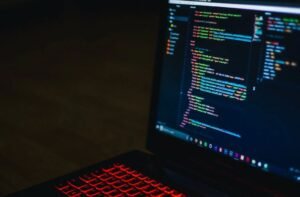What Supervised Learning Is
In the field of machine learning, supervised learning is one of the most common and widely-used techniques for creating models that can make predictions or classify new data points based on previous labeled examples. Supervised learning algorithms learn from a given dataset that contains input features and corresponding output labels, from which they establish patterns and generalize to predict or classify future data.
Key Takeaways:
- Supervised learning is a popular machine learning technique used to create models that can make predictions or classify new data points.
- Algorithms in supervised learning learn from labeled datasets, where input features and corresponding output labels are provided.
- Supervised learning involves establishing patterns and generalizing from labeled examples to predict or classify new data.
Supervised learning algorithms start by training on a known dataset, where each data point is associated with a known output label. During the training phase, the algorithm learns to identify patterns in the input features that are related to the corresponding output labels. Once trained, the model can then be used to predict the output labels for new, unseen data points.
An interesting aspect of supervised learning is that it requires labeled data for training, which means each data point must have a known output label.
There are different types of supervised learning algorithms, including regression and classification algorithms. Regression algorithms predict continuous numerical outputs, while classification algorithms assign data points to predefined categories or classes.
For instance, in a regression algorithm, you can use the data of previous house prices (input features) and their corresponding sale prices (output labels) to predict the price of a new house given its features.
Types of Supervised Learning Algorithms
Supervised learning algorithms can be categorized into two broad types: parametric and non-parametric.
- Parametric algorithms make certain assumptions about the underlying distribution of the data. They estimate parameters from the training data to build a model that can make predictions or classifications. Examples of parametric algorithms include linear regression and logistic regression.
- Non-parametric algorithms, on the other hand, do not make explicit assumptions about the distribution of the data. Instead, they rely on the data itself to learn patterns and make predictions. Decision trees and k-nearest neighbors (KNN) are examples of non-parametric algorithms.
| Parametric Algorithms | Non-parametric Algorithms |
|---|---|
| Linear Regression | Decision Trees |
| Logistic Regression | Nearest Neighbors (KNN) |
The Importance of Supervised Learning
Supervised learning is essential in many real-world applications. It allows businesses and organizations to make predictions, classify data, and gain valuable insights from their data.
- Supervised learning is used in credit risk assessment to predict the likelihood of customers defaulting on loans.
- It helps in spam filtering, where emails are classified as spam or non-spam based on pre-labeled examples.
- Supervised learning plays a crucial role in medical diagnosis, aiding doctors in identifying diseases based on patient symptoms and medical records.
| Applications | Use Cases |
|---|---|
| Credit Risk Assessment | Predicting default risk for loans |
| Spam Filtering | Email classification |
| Medical Diagnosis | Identifying diseases based on symptoms and records |
Supervised learning offers countless opportunities for automating decision-making processes by leveraging available data to make accurate predictions and classifications.
In conclusion, supervised learning is a powerful machine learning technique that enables the creation of models capable of predicting or classifying new data points. By leveraging labeled datasets and establishing patterns from them, supervised learning algorithms contribute to various industries and applications. The ability to automate decision-making processes accurately leads to improved productivity, efficiency, and insights.

Common Misconceptions
Misconception 1: Supervised learning is the same as unsupervised learning
One of the most common misconceptions about supervised learning is that it is the same as unsupervised learning. In reality, these two types of machine learning techniques are quite different. While supervised learning relies on labeled data to make predictions or classifications, unsupervised learning focuses on finding patterns or relationships in unlabeled data. Supervised learning requires a pre-defined target variable, whereas unsupervised learning does not.
- Supervised learning relies on labeled data.
- Unsupervised learning finds patterns in unlabeled data.
- Supervised learning requires a pre-defined target variable.
Misconception 2: Supervised learning can solve any problem
Another misconception that people often have about supervised learning is that it can solve any problem. While it is a powerful technique that can be applied to a wide range of problems, it is not a universal solution. The performance of supervised learning models heavily relies on the quality and quantity of data, as well as the appropriate choice of algorithms. Some problems may require more complex techniques or a combination of different machine learning approaches.
- Supervised learning is not a universal solution.
- Performance depends on data quality and quantity.
- Some problems may require more complex techniques.
Misconception 3: Supervised learning always produces accurate predictions
A common misconception is that supervised learning algorithms always produce accurate predictions. While supervised learning can be highly accurate, the performance of the model is influenced by various factors. These include the quality and relevancy of the features used for training, the presence of outliers or noisy data, and the inherent complexity of the problem itself. Even with well-implemented models, there is always the possibility of errors or misclassifications.
- Performance depends on feature quality and relevancy.
- Noisy data and outliers can impact accuracy.
- Errors or misclassifications can occur.
Misconception 4: Supervised learning requires a large amount of labeled data
Some people believe that supervised learning requires a large amount of labeled data to be effective. While having a substantial amount of labeled data can improve the performance of supervised learning models, it does not necessarily mean that a large dataset is always required. The adequacy of the training data depends on factors such as the complexity of the problem, the dimensionality of the feature space, and the choice of algorithms. With proper feature engineering and algorithm selection, it is possible to achieve good results even with a relatively small labeled dataset.
- A large amount of labeled data is not always required.
- Adequacy depends on problem complexity and feature space dimensionality.
- Good results can be achieved with a small labeled dataset.
Misconception 5: Supervised learning is foolproof and unbiased
Supervised learning algorithms are not immune to biases and limitations. Misinterpretation or biased labeling of the data can lead to biased predictions or classifications. Furthermore, the accuracy of the model heavily depends on the representativeness of the training data. If the training data is not representative of the real-world scenarios that the model will encounter, the model can produce biased or inaccurate results. Therefore, it is crucial to carefully curate and preprocess the data to minimize biases and ensure a more reliable outcome.
- Supervised learning algorithms are not foolproof.
- Biased labeling can lead to biased predictions.
- Accuracy depends on representativeness of training data.

Supervised Learning Applications
Supervised learning is a popular approach in machine learning that involves training a model using labeled data, with the aim of making predictions or classifications on unseen data. Below are ten interesting applications of supervised learning in various fields:
Predicting Stock Prices
Using historical data, supervised learning algorithms can analyze patterns and trends in stock prices, enabling investors to make more informed financial decisions.
Identifying Spam Emails
By training a model with labeled data, supervised learning can accurately classify emails as spam or legitimate, helping users filter out unwanted messages.
Cancer Diagnosis
Through supervised learning, medical professionals can develop models that analyze patient data and identify potential cancer cases, aiding in earlier detection and treatment.
Autonomous Driving
Supervised learning algorithms enable self-driving cars to recognize and respond to different objects on the road, such as pedestrians, traffic signs, and other vehicles.
Customer Sentiment Analysis
By training models with labeled customer reviews, businesses can use supervised learning to analyze sentiment and gauge customer satisfaction, helping improve their products and services.
Speech Recognition
Supervised learning is utilized in speech recognition systems to accurately convert spoken language into text, enabling applications like voice assistants and transcription services.
Credit Scoring
Financial institutions use supervised learning to assess creditworthiness by analyzing factors such as income, debt, and payment history, aiding in determining loan eligibility and interest rates.
Fraud Detection
Supervised learning algorithms can identify patterns and anomalies in transaction data, helping financial institutions prevent fraudulent activities and protect their customers.
Language Translation
By training models with parallel texts, supervised learning enables accurate and efficient language translation services, bridging communication gaps between different cultures.
Object Recognition
Supervised learning algorithms are used in computer vision systems to detect and classify objects in images and videos, enabling applications such as facial recognition and object tracking.
In this article, we explored the exciting world of supervised learning and its diverse applications. From predicting stock prices and diagnosing cancer to enabling autonomous driving and fraud detection, supervised learning continues to revolutionize various industries. By harnessing the power of labeled data, models trained using supervised learning can make accurate predictions and classifications, providing valuable insights and enhancing decision-making processes. As technology advances, we can expect further advancements and innovations in the field of supervised learning.
Frequently Asked Questions
What Supervised Learning Is
What is supervised learning?
Supervised learning is a machine learning technique where an algorithm learns from labeled training data to make predictions or decisions. The algorithm is provided with a set of inputs along with their corresponding correct outputs, and it learns to map the inputs to the correct outputs.
What are the advantages of supervised learning?
Supervised learning allows for accurate predictions, can handle complex problems, and has well-defined evaluation metrics. It can also be applied to a wide range of tasks, such as classification, regression, and ranking.
What are the different types of supervised learning algorithms?
There are several types of supervised learning algorithms, including decision trees, random forests, support vector machines (SVM), logistic regression, naive Bayes, and neural networks.
How does a supervised learning algorithm work?
A supervised learning algorithm learns from labeled training data by constructing a model that can predict the correct output for new, unseen inputs. It works by finding patterns and relationships in the training data and using them to make accurate predictions on new data.
What is the process of supervised learning?
The process of supervised learning involves collecting and preparing training data, selecting an appropriate algorithm, training the model on the data, evaluating the model’s performance, and then using the trained model to make predictions on new, unseen data.
What is the role of labels in supervised learning?
Labels are the correct outputs associated with the input data in supervised learning. They serve as the ground truth for the algorithm to learn from. The algorithm tries to find patterns in the data that match the correct labels and uses this knowledge to make predictions on new, unlabeled data.
How is supervised learning different from unsupervised learning?
Supervised learning uses labeled training data to learn from, whereas unsupervised learning deals with unlabeled data. In supervised learning, the algorithm learns to map inputs to correct outputs, while unsupervised learning focuses on finding patterns and relationships within the data without any predefined outputs.
What are some common applications of supervised learning?
Supervised learning is widely used in various fields, including image and speech recognition, natural language processing, fraud detection, recommendation systems, and medical diagnosis.
What are the challenges in supervised learning?
Challenges in supervised learning include the availability and quality of labeled data, overfitting or underfitting of the model, choosing the right algorithm and its parameters, and dealing with imbalanced or noisy datasets.
Can supervised learning algorithms be used for real-time predictions?
Yes, supervised learning algorithms can be trained on historical data and then used for real-time predictions. Once the model is trained, it can quickly process new input data and provide accurate predictions or decisions in real-time.




